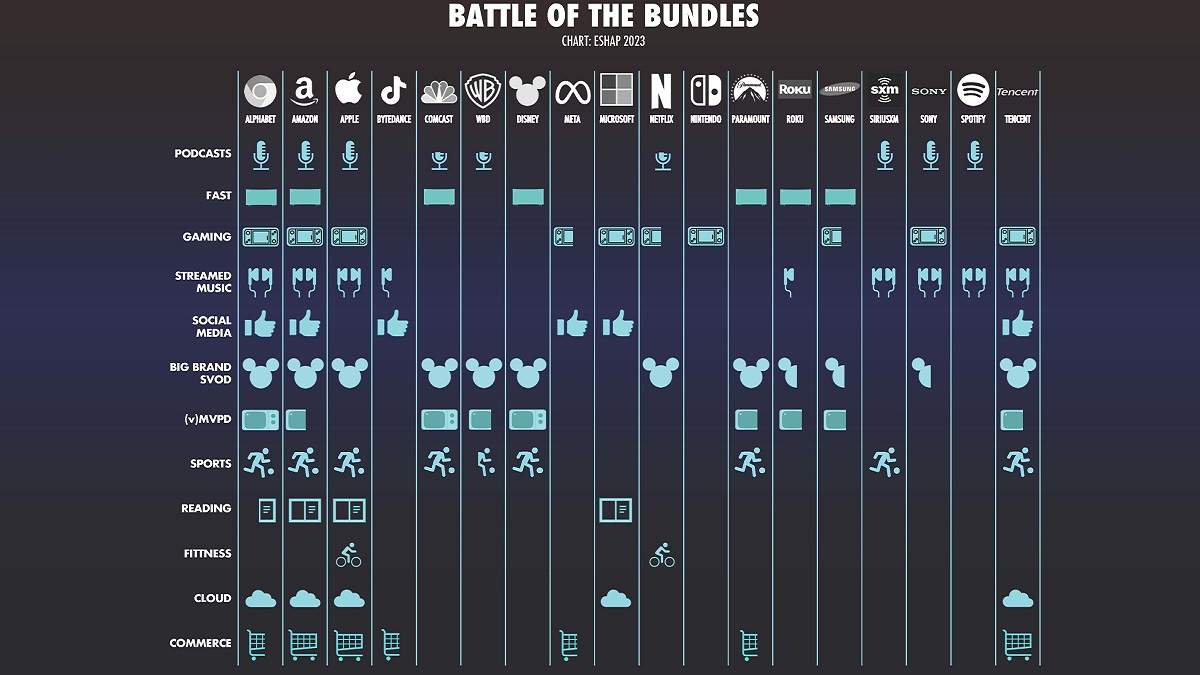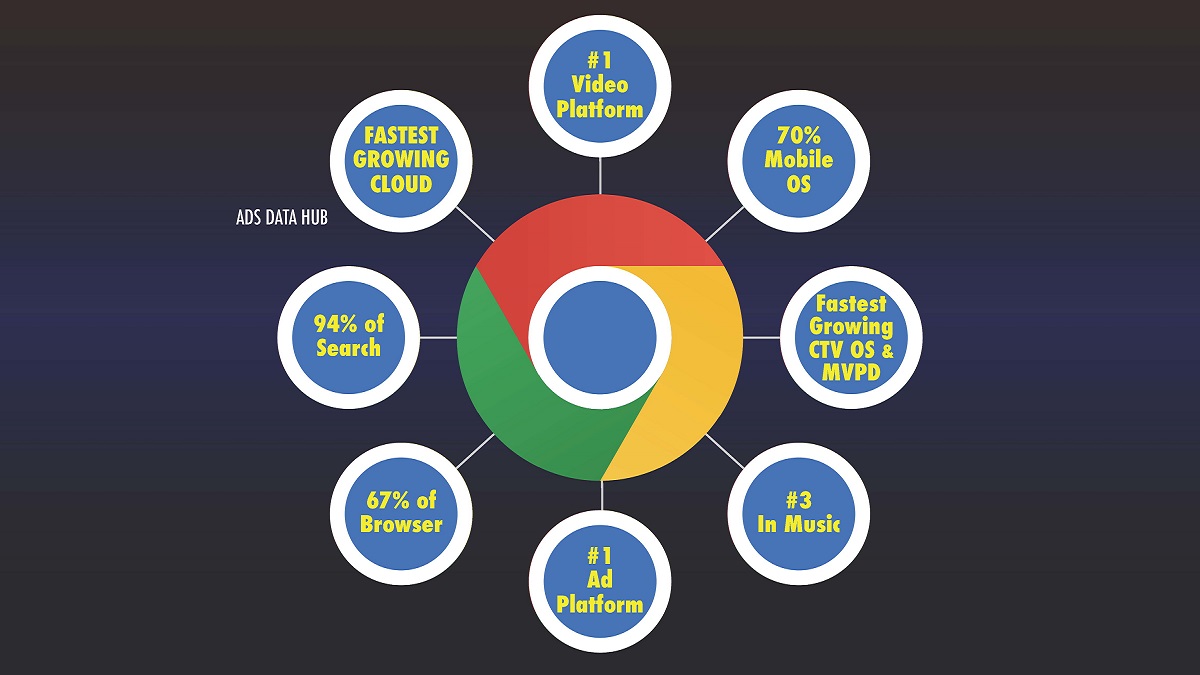Watch “Evan Shapiro Amplified: What to Expect for M&E in 2024.”
TL;DR
- “Evan Shapiro Amplified: What to Expect for M&E in 2024” examines the pivotal trends disrupting traditional business models in the new user-centric era, and provides actionable strategies for industry players to adapt and thrive in a rapidly changing media ecosystem.
- The advertising landscape within the Media & Entertainment industry is poised for transformation as we venture into 2024, says Shapiro, with digital media and connected TV at the forefront.
- User-generated content is increasingly being considered on par with premium content in terms of quality and effectiveness for advertisers, Shapiro says.
- Mergers and acquisitions will continue to be a major trend, with Big Tech companies using these strategies to solidify their hold on the media ecosystem and reduce competition.
- The streaming wars have morphed into the “battle of the bundles,” as companies like Amazon and Alphabet create comprehensive service packages that cater to the evolving hierarchy of consumer needs.
As 2024 approaches, the Media & Entertainment industry stands at the dawn of a new user-centric era, shaped by relentless innovation and shifting consumer dynamics. In this ever-evolving landscape, media universe cartographer Evan Shapiro dissects the pivotal trends disrupting traditional business models and provides actionable strategies for industry players to adapt and thrive in the rapidly changing media ecosystem.
Our latest installment of Evan Shapiro Amplified, “What to Expect for M&E in 2024,” delves into Shapiro’s predictions for the upcoming year. His insights, rooted in a deep understanding of industry trends and consumer behavior, offer a glimpse into what 2024 holds for media professionals — from the rapid shift to digital in advertising and evolving measurement challenges, to potential big-name mergers and acquisitions, strategic service bundling, and Big Tech’s growing dominance. Watch the full discussion in the video at the top of the page.
The Digital and Connected TV Advertising Revolution
The advertising landscape within the Media & Entertainment industry is poised for transformative change as we venture into 2024, says Shapiro, with digital media and connected TV (CTV) at the forefront.
“From an advertising standpoint, this year was the year that digital and connected television caught up,” to and likely even surpassed traditional television on a month-by-month basis, he says.
He notes the significant shift in advertising revenues, highlighting the growing dominance of digital platforms. “But when you look at where the money is going, it is not going back to where it was pre-lockdown,” he emphasizes. “The money that’s been sitting on the side isn’t going to the same place as it was distributed to equally in 2019. It’s going to new places, and fewer places.”

Another shift, says Shapiro, is that user-generated content is increasingly being considered on par with premium content in terms of quality and effectiveness for advertisers.
“Creator-led content is increasingly moving to the big screen, and the two ecosystems are commingling on connected televisions,” he says. “The ad buyers themselves now see creator-led content on par from a quality and environment and — crucially — efficacy standpoint, as they do professionally produced Hollywood content.”
It’s important to understand “that most creator-led content actually is professional content,” Shapiro continues. “The people who create the most successful creator-led content are professional creators, often within larger ecosystems.” This perception has led audiences to shift to connected TV platforms like YouTube, which is now the single largest channel on TV, he notes, “but so are the ad dollars because both communities now see that as the destination for their resources.”

Big Tech Continues to Dominate in 2024
The dominance of Big Tech companies in M&E is expected to deepen in 2024, Shapiro predicts. He describes these entities as “trillion-dollar Death Stars,” strategically employing mergers and acquisitions to reduce competition in the marketplace. This trend, he underscores, transcends mere power consolidation, aligning closely with the strategic service and product integration seen in the Amazon Prime model.
“This year has been pretty tumultuous,” Shapiro notes, pointing to the significant increase in job losses within media and tech at a scale not seen since the height of the lockdown. “Part of that is just a reassembling of the industry itself. And part of that is companies preparing themselves for sale.”

Looking ahead, Shapiro anticipates several substantial mergers and acquisitions in the M&E ecosystem. “I think a lot of companies that find themselves at a fraction of their former valuations are going to be open to being subsumed by major corporations, I think Big Tech will solidify its hold on the media ecosystem, through either acquisitions or through, basically, the reduction of competitive forces in the marketplace.”
As a result, he warns, “these combinations are going to create even more job losses in 2024 in the media ecosystem.”
But in an increasingly Big Tech-dominated world, Shapiro reminds us, “content is still king. Big Tech is the throne, but content will remain at the heart of the ecosystem.”
The media ecosystem “can’t survive by Big Tech alone,” he explains, a fact that Big Tech companies already understand all too well. “You have to understand the rules of the game, and you have to understand what your leverage is in your ecosystem, your ability to deliver a very specific audience to all the platforms that you’re going to perform your content across.”
The Battle of the Bundles

The streaming wars have morphed into what Shapiro calls “the battle of the bundles.” This shift towards a more integrated approach is best exemplified by Amazon Prime, which aligns its media services to serve the diverse and evolving needs of consumers and their “hierarchy of feeds.”
The supremacy of the traditional “triple play” bundle of phone, cable TV, and internet is over, Shapiro declares. “We need to replace the high-margin value system created around video as a marketing hook for the triple play. And the best way to do that is Amazon Prime,” he advises.
“The companies that are able to do this are going to win in the user-centric era where the competition is for total attention, and total mindshare.”
Alphabet serves as another model of successful consumer engagement, Shapiro points out. “They’re currently operating the only growing MVPD with YouTube TV,” he notes, highlighting the company’s leading position as the top video platform on both mobile and connected TV, in addition to being one of the world’s top three music services and possessing “a great sports strategy with NFL Sunday Ticket.”


Challenges and Opportunities for 2024
As the Media & Entertainment industry marches into 2024, it faces a landscape rife with both challenges and opportunities to thrive in the user-centric era. Video games, in particular, shows potential for explosive growth.
“One of the fastest growing segments in the ad economy right now is in gaming,” Shapiro notes. “Most of that is mobile,” he continues, pointing out that a new Publishers Clearing House survey of 68,000 consumers found that more than of half of people over 25 are gamers, and game either daily or multiple times per week. “Most of those are on mobile, most of those are women. And most of the revenues generated in the mobile gaming ecosystem come from ad dollars. It’s a very effective ad environment and it’s growing very quickly.”
Shapiro advises media companies to look for extensions on the business they’re already doing with new forms of revenue and commerce. “Not only what your merchandise is, but how do you get rewarded for the products you’re selling for your ad partners,” he says. “So there’s a ton of different things you can do. But most of them aren’t necessarily stealing more share from your neighbor. A lot of times it is growing the revenue per user within the universe that you currently have.”




Discussion
Responses (1)